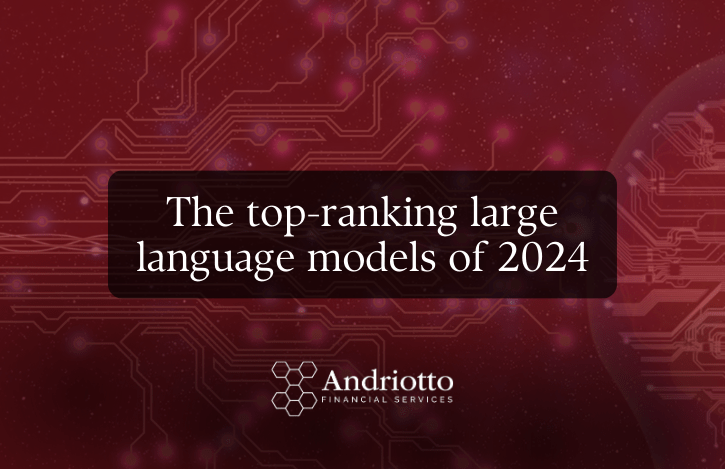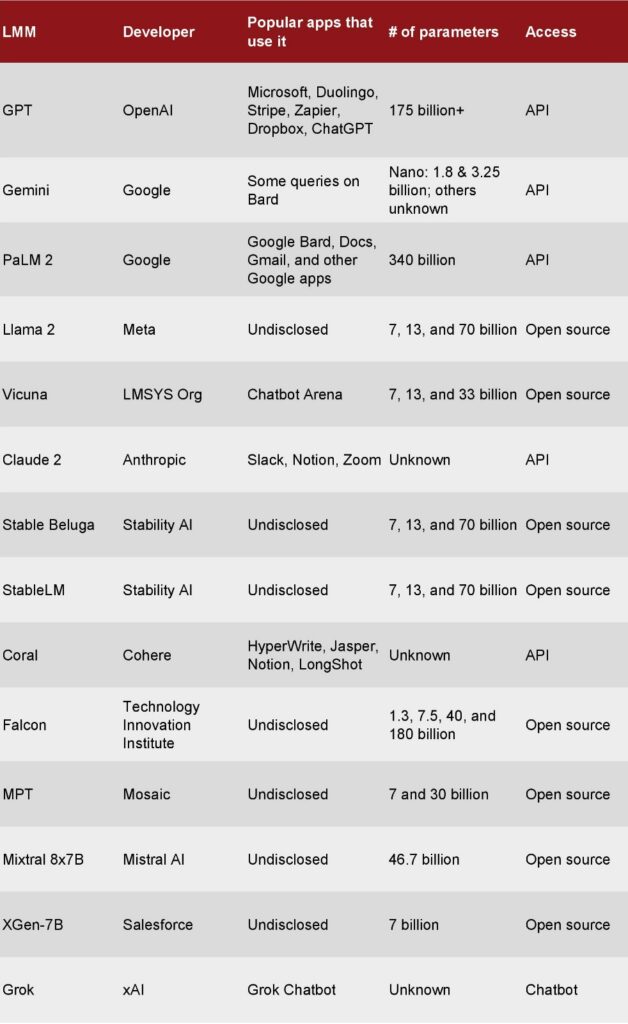Large language models (LLMs) are sophisticated artificial intelligence (AI) systems that are revolutionizing text processing across various applications. Although LLMs have been incubating in research laboratories since the late 2010s, their proliferation accelerated following the emergence of ChatGPT. This article outlines the top-ranking large language models of 2024.
Understanding LLMs
A large language model serves as a versatile AI text generator, forming the backbone of AI chatbots and writing generators. Unlike keyword-driven systems, chatbots leveraging LLMs aim to comprehend inquiries and respond contextually, rather than relying on pre-programmed responses.
Mechanisms of LLMs
LLMs function through extensive training on vast datasets. For instance, early versions like GPT-1 struggled to maintain coherence advanced to GPT-4, capable of producing thousands of coherent words. These models undergo training on extensive amounts of data, comprising the entirety of the public internet and major published works. Through this process, LLMs develop an understanding of word relationships, represented as high-dimensional vectors, facilitating the creation of neural networks. These networks are composed of layers and nodes. They compute subsequent words based on input strings, with the complexity of generated text correlating with the network’s size and structure.
Despite their complexity, LLMs require further fine-tuning to ensure they generate relevant and accurate responses. This involves adjusting the weights of network nodes and other refinement techniques. While LLMs may seem like enigmatic black boxes, their functionality is grounded in understandable processes. However, they are susceptible to generating nonsensical responses, particularly to ambiguous or incorrect queries. Questions within their trained scope yield accurate responses. However, queries outside their training data may result in unpredictable or erroneous outputs.
In essence, LLMs may seem like mysterious black boxes, but their inner workings are far from magical. Once you grasp some basics about their operation, it becomes evident why they excel at certain types of inquiries and occasionally fabricate nonsensical information.
Consider, for instance, straightforward questions like:
- What is the capital of France?
- What is the chemical symbol for water?
- Who painted the Mona Lisa?
These queries are easily handled by LLMs. The training data likely formed a neural network predisposed to provide accurate responses.
Now, go to questions like:
- How many liters are in a gallon of milk?
- How many days are in a week on Mars?
- What color is the sound of a trumpet?
Responses to such inquiries are prone to being peculiar or incorrect due to their trickiness or inaccuracy, challenging the neural network’s ability to produce precise outputs.
Applications of LLMs
LLMs find utility across various domains, from customer service to content generation, thanks to their adaptability. This is the reason behind the significant rise of LLMs: these models, whether with additional training or not, can be utilized to address customer inquiries, compose marketing content, condense meeting minutes, and perform various other tasks efficiently. Common applications include chatbots, translation, coding assistance, content generation, sentiment analysis, and more.
Below, a summary of the several tasks for which LLMs are frequently employed:
– Serving as general-purpose chatbots (e.g., ChatGPT and Google Bard)
– Operating as customer service chatbots trained on a company’s documents and data
– Facilitating text translation between languages
– Converting text into computer code or between different languages
– Generating social media posts, blog entries, and other marketing content
– Conducting sentiment analysis
– Moderating content
– Editing and proofreading text
– Analysing data
However, it is important to note that there are certain tasks that LLMs are incapable of performing. these tasks require specialised AI models. For instance, interpreting images, generating images, converting files between different formats, searching the web, and executing mathematical and logical operations.
Some LLMs and chatbots may seem capable of performing these tasks. However, in many instances, they rely on assistance from other AI services. When a model is tasked with handling various inputs, it transitions from being classified as a large language model to becoming what is known as a large multimodal model. However, this distinction is somewhat semantic. Now, with this context in mind, let’s proceed to discuss the LLMs themselves.
What are the top-ranking large language models of 2024?
Numerous major LLMs exist, along with potentially hundreds deemed significant for various reasons. Attempting to enumerate them all would be nearly impractical, compounded by the swiftly evolving landscape as LLM development progresses.
Below, we present a curated selection of LLMs that have emerged as leaders in terms of performance, innovation, and widespread adoption.
Table: Top-ranking large language models
Why has there been an explosion in the number of LLMs?
In fact, several significant factors have contributed to this shift.
Firstly, with the introduction of GPT-3 and ChatGPT, OpenAI demonstrated that AI research had advanced to a stage where practical tools could be developed. This prompted many other companies to follow suit.
Secondly, although training LLMs demands considerable computing power, this task can now be accomplished within weeks or months.
Thirdly, the availability of numerous open-source models enables retraining or adaptation into new models. This eliminates the necessity of creating an entirely new one.
Lastly, the substantial investments in AI companies have created significant incentives. These incentives are for individuals possessing the requisite skills and knowledge to develop various types of LLMs.
Future Outlook
Anticipated developments in LLMs include increased adoption by major tech companies, optimization for lightweight devices, and the emergence of large multimodal models combining text with other modalities like images and audio.
The evolution of LLMs continues to reshape AI capabilities, with potential advancements toward artificial general intelligence (AGI) in the future.
At AFS, we are passionate about fostering innovation and empowering ambitious minds to flourish. Our mission is to provide best-in-class financial services for traditional and crypto deals, exploit European grants, and use quantitative methods to improve clients’ performance. We aim to help our customers unlock their full business potential.
Let’s unlock your enterprise’s full potential together!
Get in touch at [email protected].



